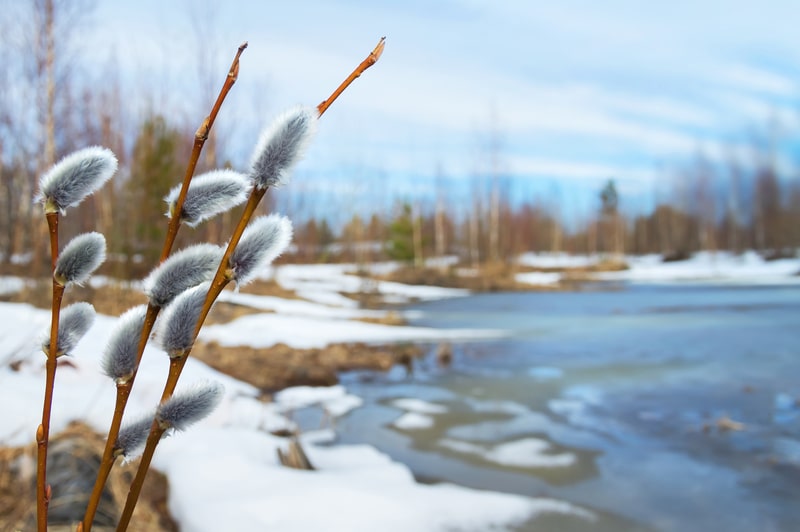The quick melting to freezing temperatures over the past month has made it a difficult trek for longer commuters, even just the drive to the grocery store felt treacherous on some of that ice! This thaw can also affect our trees and their trek back into spring. While plants and trees will each react differently to warming temperatures, you can always help them out by doing a few extra chores before the warmer weather really sets in. Here are some quick and easy ways to help your trees get ready for the real spring this year!
Mulching
We absolutely love good mulching and so will your trees! Applying a hearty layer of mulch around the trunk of your trees offers them beneficial insulation against freezing or fluctuating temperatures. Protecting the root systems of our trees is a top priority because a healthy root system makes for a healthy tree. Another reason for mulch is because of the moisture retention that it offers. This gives the tree access to water no matter what’s happening in the climate around it. To mulch properly, apply between two and four inches of mulch around the base of your tree and make sure to leave some breathing room around the trunk! How far out your mulch is up to you, but mulching to the edge of the tree’s canopy line is a great way to measure! Be careful of over-mulching as you don’t want to suffocate the roots and always clear away the old mulch before you reapply a new layer. Did you know mulching also prevents weed growth?
Feed Your Tree
As nifty as it would be to take one of your trees out to lunch, we mean fertilizing! Providing trees with lots of nutrients, especially as they begin to come out of dormancy, is a must to keep your trees thriving. You can use slow-release fertilizer that gradually adds nutrients to the soil or you can manually spread fertilizer. Either way, make sure you’re not applying fertilizer directly next to the trunk of the tree, spread across the roots about a foot or more out from the trunk and out to the canopy line or the drip line. Growing trees especially appreciate a bit of a nutrition boost, but it’s not essential to fertilize all of our leafy friends. Learn the needs of your individual trees and watch them flourish!
Pruning and Trimming
The act of pruning is not the same as trimming and this is because pruning is only removing the dead, dying or detrimental parts of the plant where trimming is cutting back green buds to produce healthy overall growth. Trimming is often used in commercial settings for aesthetic reasons where pruning should be done regardless of the setting. Cutting away diseased and dying parts of a tree means the plant can put its energy elsewhere, like brand new growth in spring! Pruning should be done around the plant’s blooming cycle, meaning early spring and late fall are typically the best times to do the most pruning. Treat your tree to a haircut this spring and prune away anything that could hold back your leafy friend!
If you plan to add to your tree collection, spring is the time to start planting baby trees! Before you add any more plants to your yard, make sure you’re observing and paying attention to the ones you already have. Take note of abnormalities or potential signs of disease. If you’re unsure or you’re not entirely sure what to look for, call us at 403-262-1666 and we’ll help you help your trees thrive this spring!



